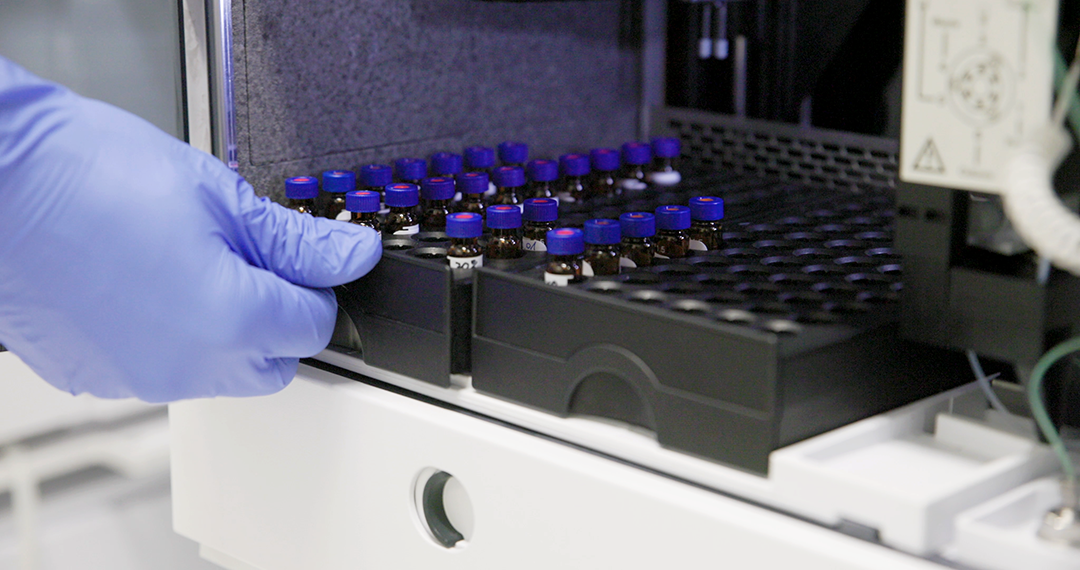A variety of analytical techniques have been developed for the quantification of cannabinoids and other compounds in cannabis plants and their extracts. The most common analytical techniques for cannabinoid determination are:
- Gas chromatography
- High-Performance Liquid Chromatography
- Thin-Layer Chromatography
- Spectroscopic methods such is Near-Infrared Spectroscopy (NIR)
Gas chromatography (GC) is one of the most commonly used chromatographic methods, but it does not quantitatively measure cannabinoids in their native state. GC requires high temperatures and the acidic phytocannabinoids that are biosynthesized in the plants, undergo decarboxylation during the analysis. Furthermore, in the hot inlet of a GC, cannabinoid-degradation products are formed. With GC the total quantity of cannabinoid in a sample is measured as the sum of the acidic and neutral components.
Analytical HPLC (High-Performance Liquid Chromatography) provides a quantitative basis for analyzing cannabis plants, extracts and derivatives. It is superior to GC as the performance is not dependent on the temperature, which ensures that decarboxylation of the acidic forms does not take place. Analytical HPLC thus provides the most accurate assessment of the cannabinoid concentration, enabling the pharmaceutical-grade quantification of plants, extracts and cannabis-infused products.
Thin-Layer Chromatography is useful in the rapid screening of many samples for existing cannabinoids; however, its performance is lower compared to other separation methods, and the reproducibility of TLC also depends on parameters such as the relative humidity of the sample.
Spectroscopic methods include all those methods that use light waves, from infrared to ultraviolet. These methods work best to identify a single cannabinoid. When an unknown cannabinoid is scanned, it is compared with a database of stored spectra, and when a match is found, the unknown cannabinoid is identified. In a complex matrix such as cannabis and hemp, these methods fail to provide accurate results.

PharmaHemp Laboratories utilizes HPLC for the potency testing of cannabis and cannabis-infused products. This technique is considered to be the industry’s gold standard, as it is undoubtedly the most accurate way to measure the components of cannabis. All other methods fall short of being able to provide the accuracy, sensitivity and reproducibility that HPLC offers.
The HPLC technique with a diode-array-detection (DAD) system, as used in the PharmaHemp Laboratories, can reliably quantify all the major cannabinoids in all types of matrices (e.g., flowers, leaves, seeds, resin, oils, extracts, isolates, tinctures, water-soluble formulations, alcoholic and non-alcoholic drinks infused with CBD or cannabis extracts, creams, lotions, balms, and edibles such as brownies, gummies and honey).

PharmaHemp Laboratories uses a high-dynamic-range (HDR) detector system that has an extremely low detector noise, regardless of the length of the optical path, and thus expands the linear dynamic range of the method. This enables us to not only have simplified sample preparation without any subsequent sample dilutions, but also facilitates the detection of much lower concentrations of cannabinoids in the samples – we are capable of lowering the limit of quantification (LOQ) down to 0.0003 % (matrix-dependent). This is extremely important for markets like the UK that have strict regulations regarding the THC content in final products. We can quantify so-called trace amounts of THC or other cannabinoids with high accuracy and repeatability, and we are able to do so in a variety of different formulations.

